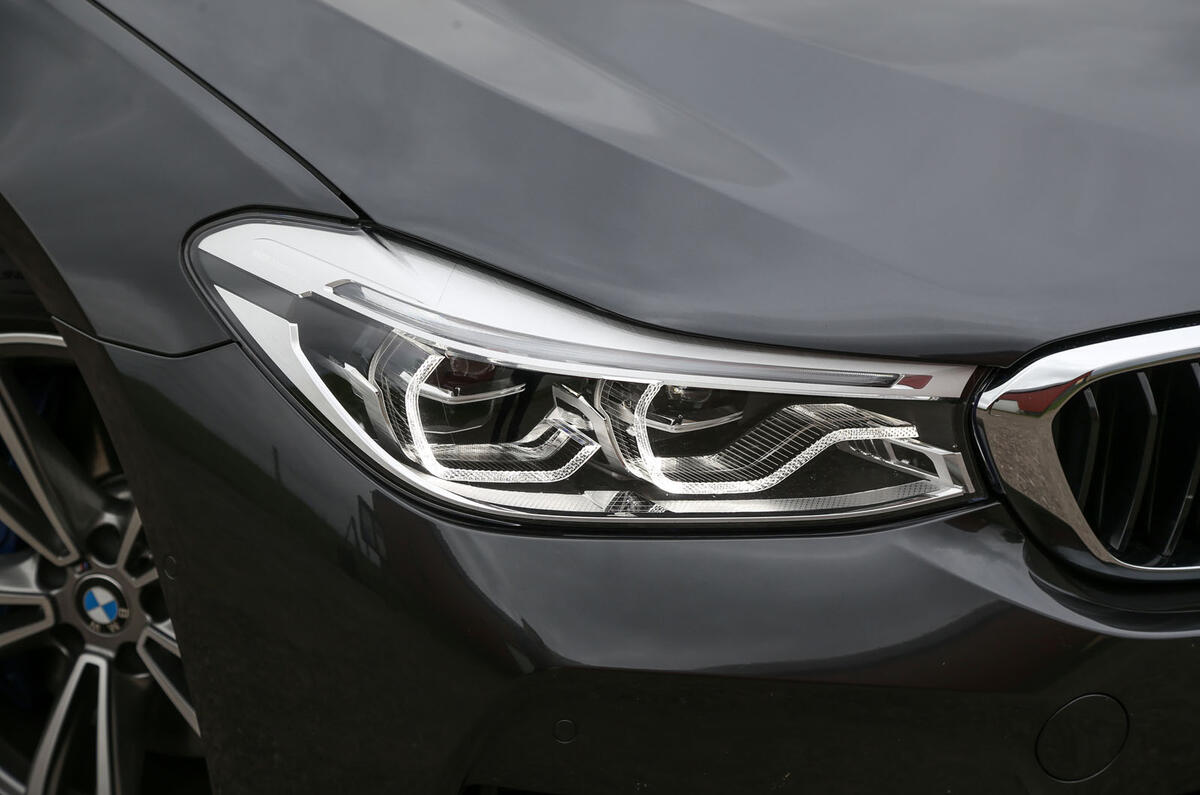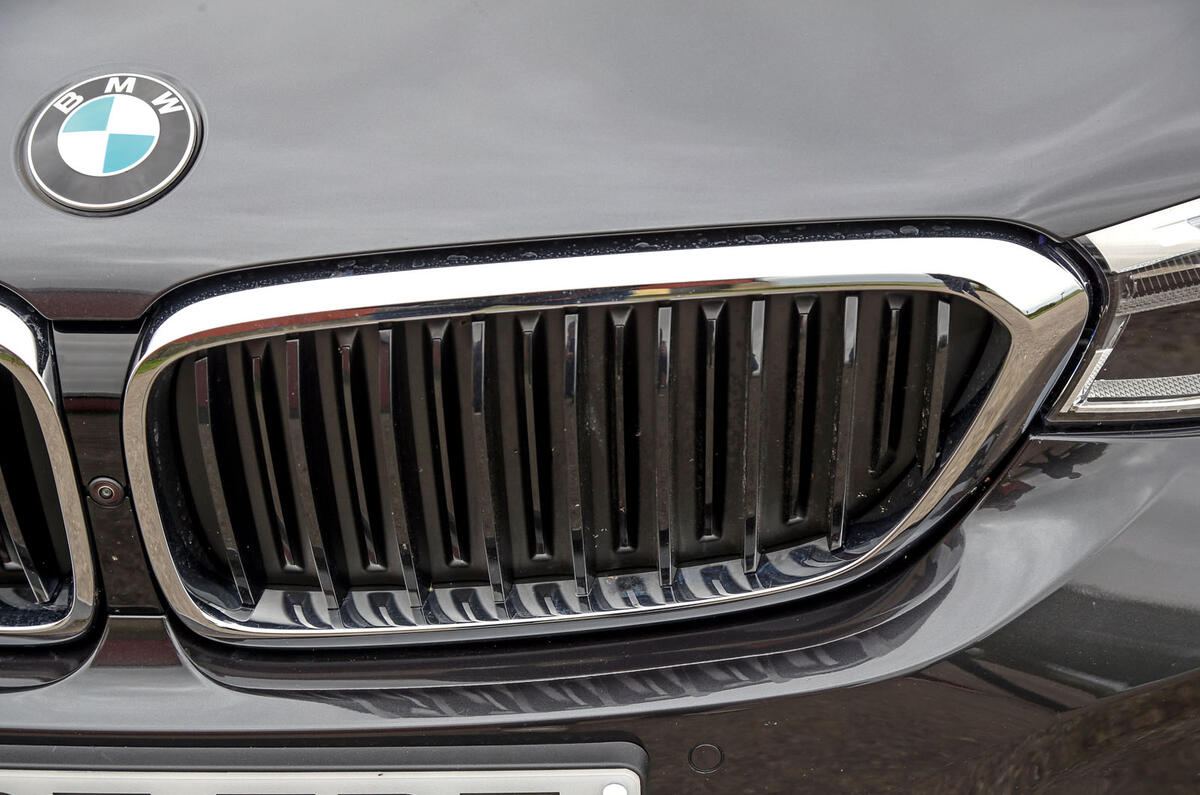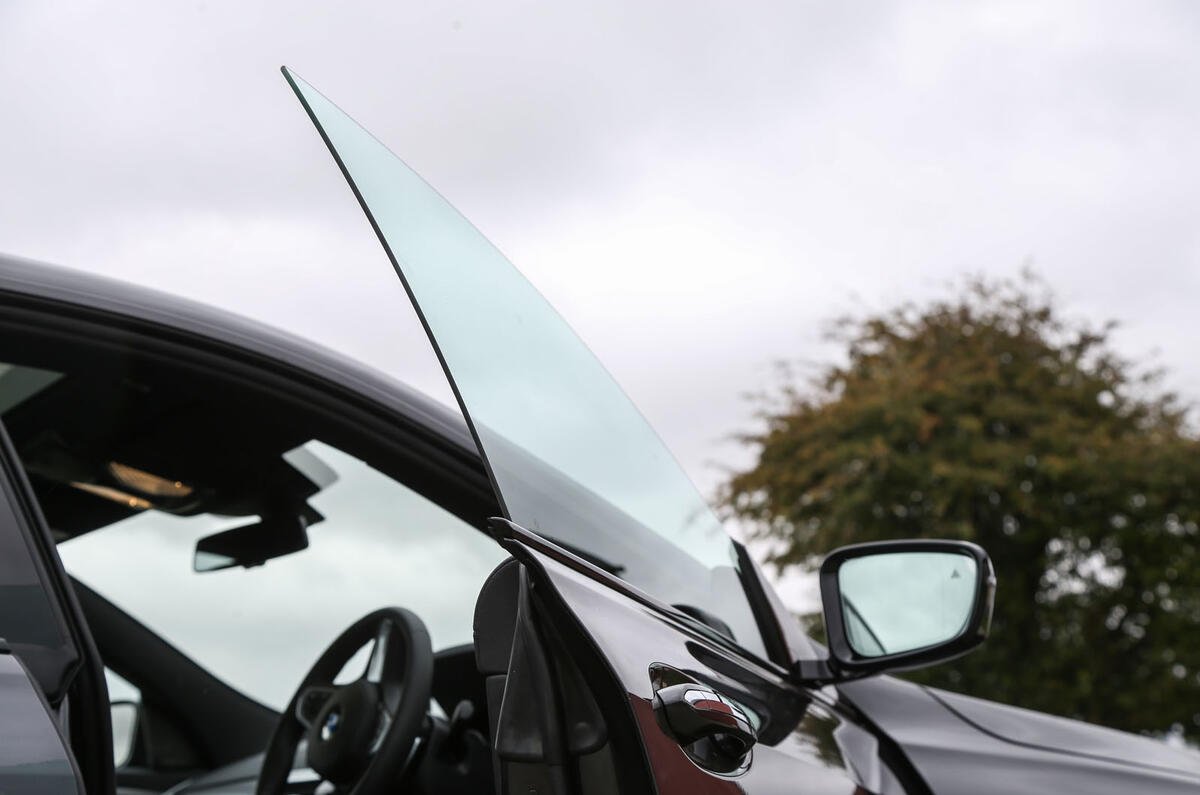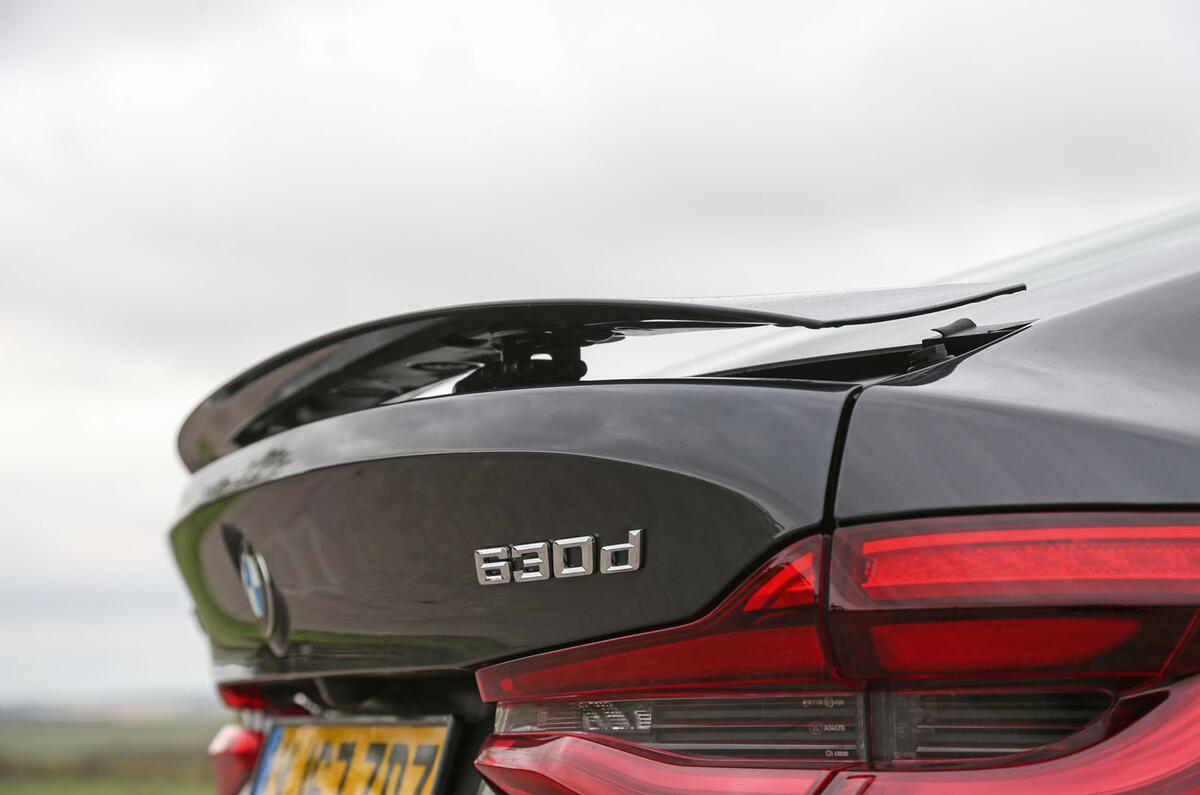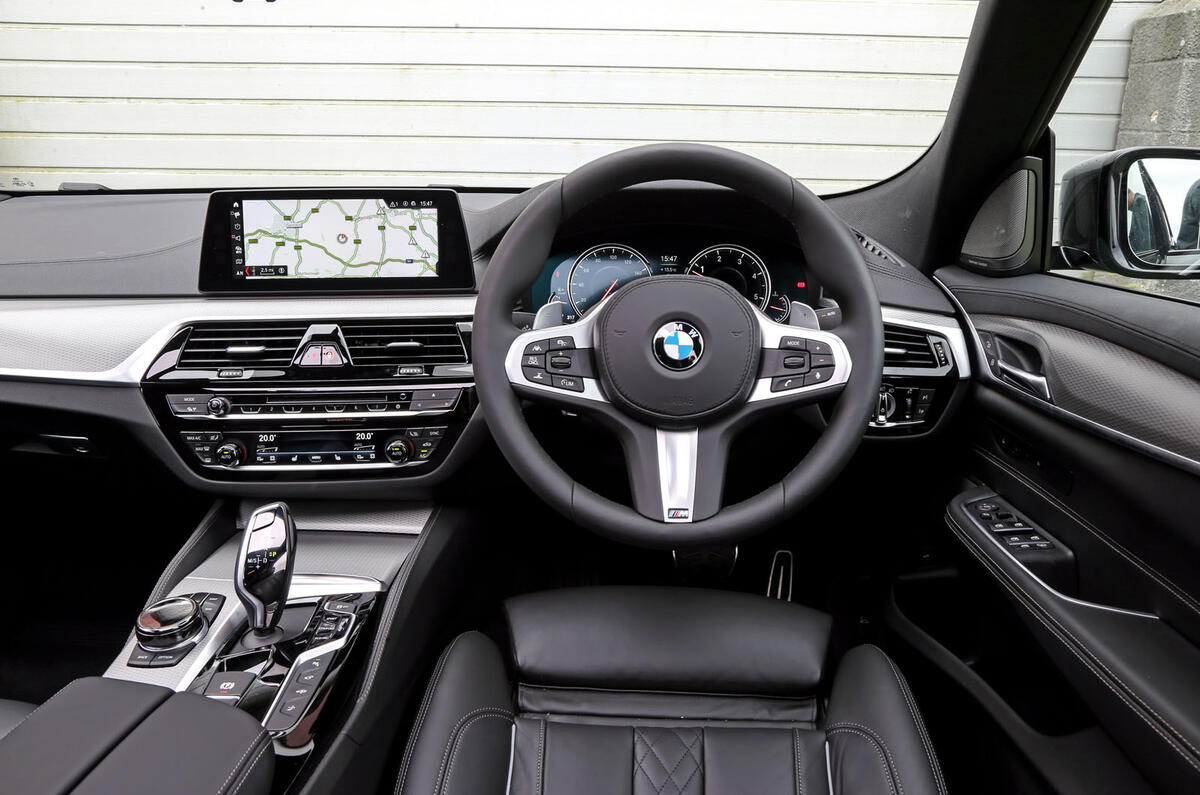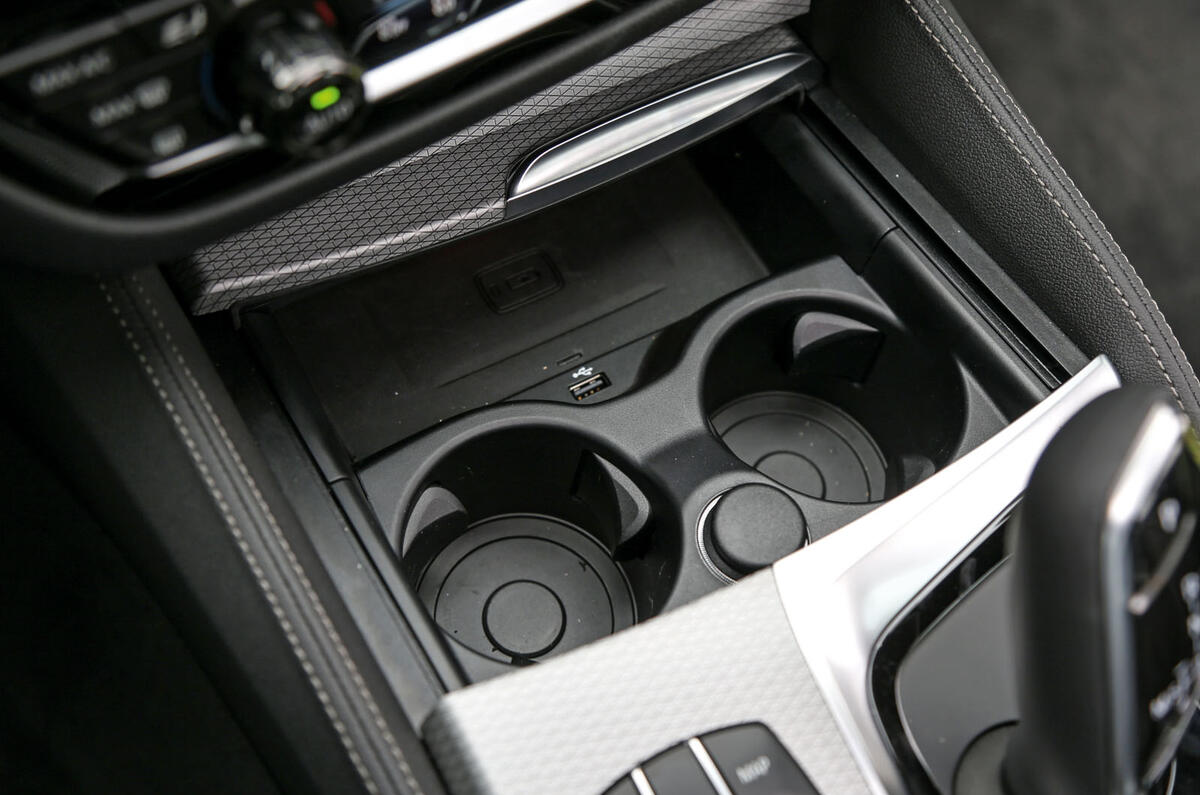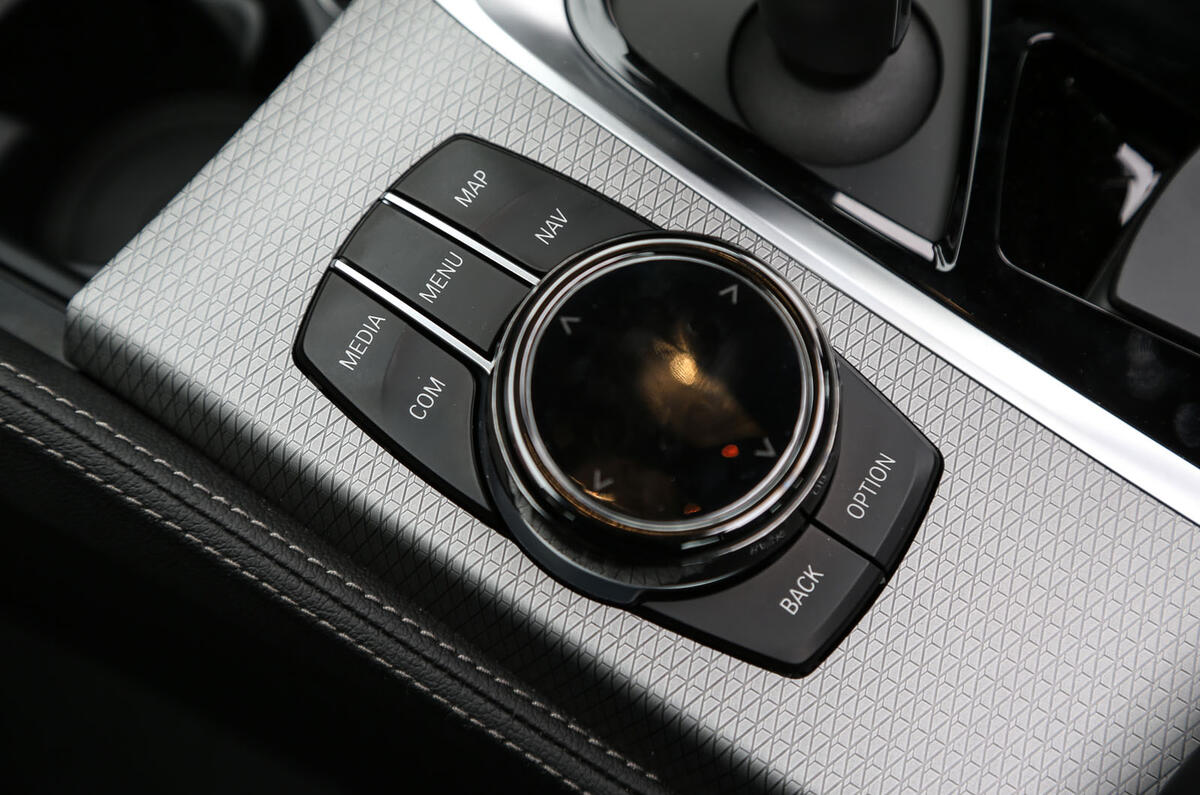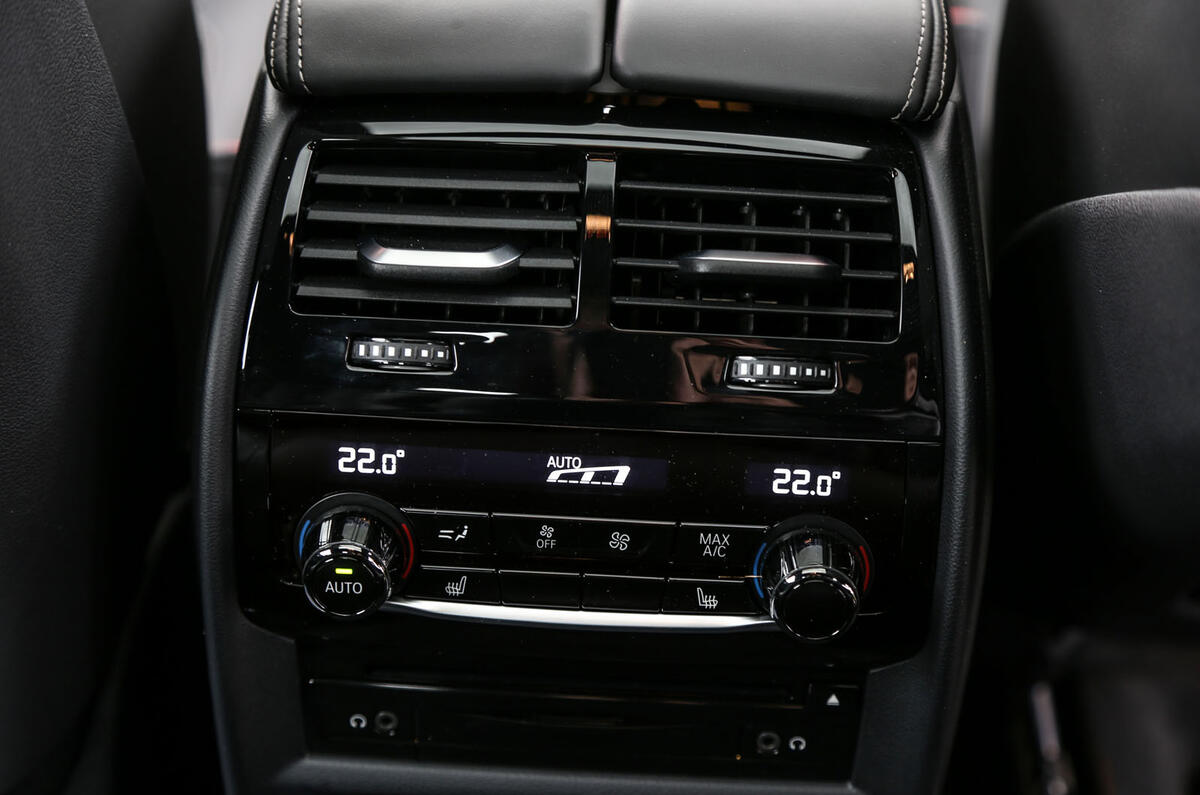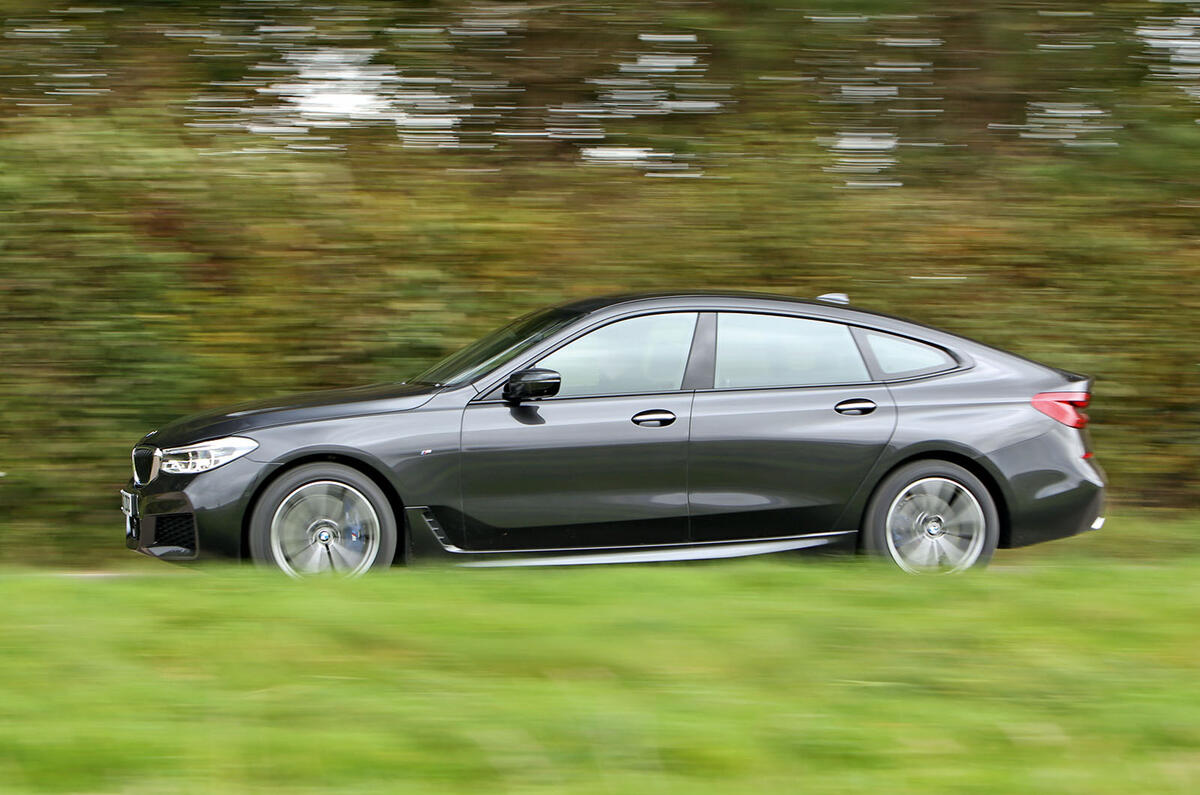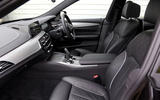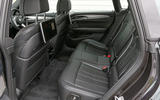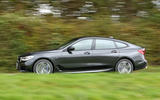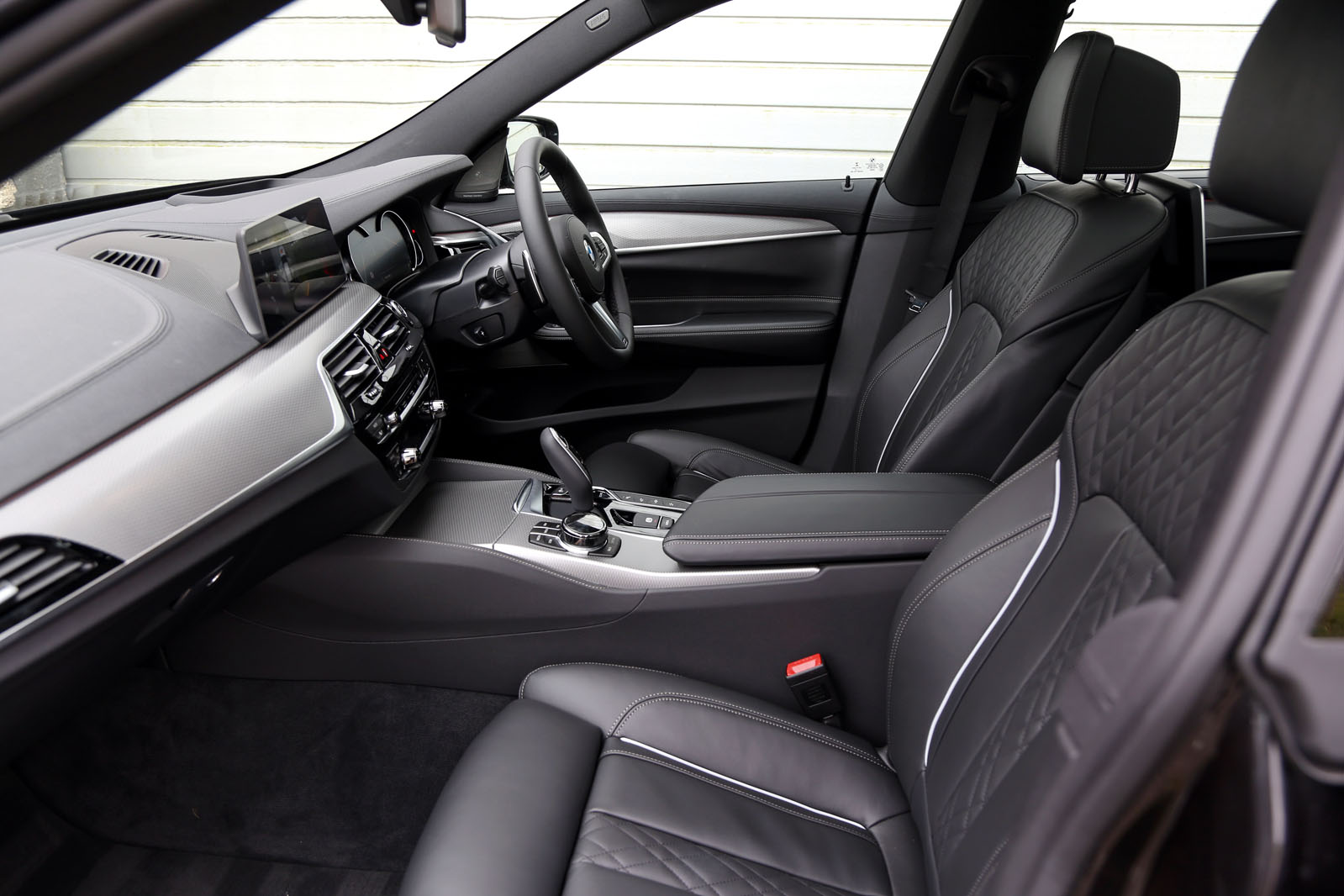BMW is offering an intriguing sort of relatively affordable, moderately high-rised alternative to conventional executive-car luxury here.
The frameless doors, swept-back A-pillars and curving roofline may all be taken from the grand touring coupé’s design rulebook, but the 6 GT feels like anything but from inside.
Its seats are semi-recumbent, with a more highly set hip point than you’d find in a full-sized limo such as a 7 Series or Mercedes-Benz S-Class. Up front, the bent-legged ‘sit-up-and-beg’ driving position feels almost akin to that of a vintage chauffeur’s.
But that doesn’t mean you’re short on space anywhere in this car; quite the reverse, with more head room and better visibility in both rows than you’d get from a large executive saloon, and excellent knee, foot, elbow and shoulder room available too.
In the driver’s seat, conflicting sensations of familiarity and difference come at you. The fascia is much as you’d find it in a 5 Series saloon.
Like those of the 5 Series, the 6 GT’s flatscreen digital instruments change their scale, colouration and theme depending on the selected driving mode.
The centre-stack-mounted air-con controls are as you’d find them on a high-end 5 Series too; likewise the centre-console-cited iDrive controller and gear selector.
But your position and orientation to all of the above is different. Your vantage point on them is higher – either a little bit higher or quite a lot so, depending on how you set the electric seat.
Our test car had BMW’s optional Rear Seat Comfort Pack (£2995), which adds a pair of tablet-sized rear entertainment screens in addition to side-window sunblinds, electric backrest adjustment and an on-board TV tuner.
The back seats aren’t as widely adjustable as those of, say, a long-wheelbase S-Class or a Bentley Bentayga, but they’re very agreeable.
Up front, the 6 Series sets a high standard on material fit and finish but leaves itself vulnerable to relative criticism in one or two areas.
There is no shortage of apparent quality about the fixtures and fittings, but there is a deficit of richness compared with some luxury rivals, BMW’s switches and trims missing a little bit of tactile material swagger in places.
Where BMW reaches for smooth nappa leather, on the door cards and around the centre console, it uses it very well, but it’s notable by its absence on top of the dashboard and the upper interior doors, where moulded ‘leather-effect’ plastic lets the side down a little.
At the back, meanwhile, the 610-litre cargo bay looks enormous enough to easily give credence to BMW’s claim that it’ll swallow four full-sized golf bags without the need to fold a single seat.
It has a flat floor and a powered tailgate actuated by gesture control, making sliding awkward loads in and out very easy.
The 6 Series GT gets BMW’s latest ID6-generation iDrive infotainment system with a 10.3in display screen that permits touchscreen control, gesture control, voice control and input via the rotary commander that so many BMW regulars will be used to.
ID6 allows you to set up your Home screen however it suits you best and it’s very intuitive to use.
It also has much more advanced voice control algorithms, so instead of giving commands like “navigation”, “enter destination”, “Paris”, you can simply say: “Take me to the Eiffel Tower.”
The voice control interface extends to the car’s connected entertainment systems.
Spend £160 on BMW’s Online Entertainment package and you get access to music streaming via Napster and Deezer, all provided over the car’s own 4G data connection.
ID6 also includes vehicle-to-vehicle communications so that warnings about ice, rain, fog or accidents on the road ahead can be relayed directly to your car from other BMWs with a compatible system that are at least three miles in front of you.



